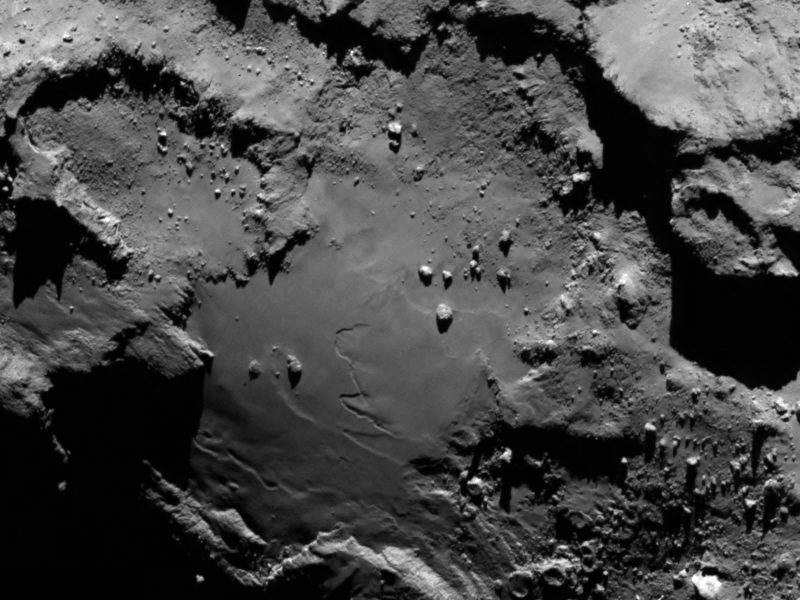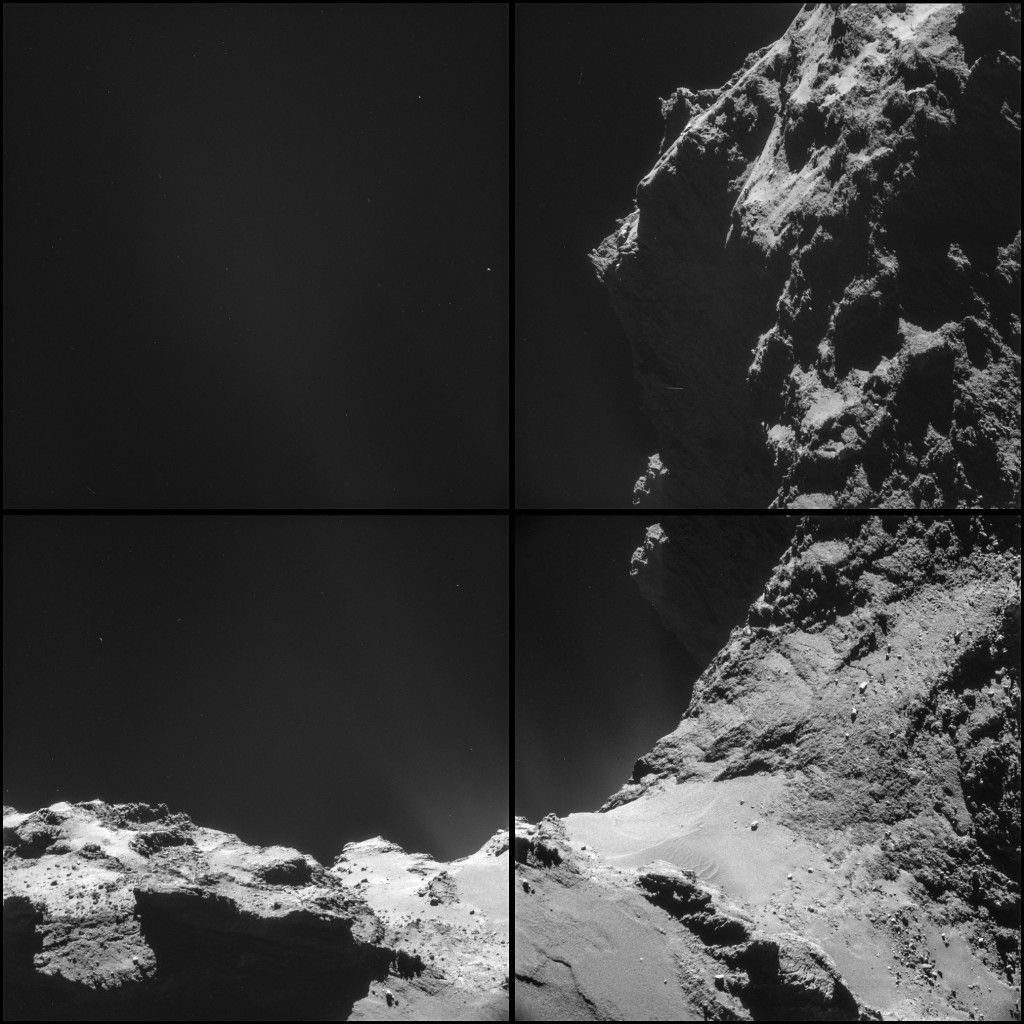The European Space Agency’s Philae lander successfully landed on a comet and is sending signals backs after an early mishap, scientists said at a news conference in Germany Thursday.
The lander, dropped from the Rosetta spacecraft on Wednesday after a 4-billion mile, 10-year journey, became the first craft to make a soft landing on a comet.
But the lander initially failed to fire anchoring harpoons into the surface of the comet, which has very weak gravity, and it bounced three times before coming to an awkward stop in a still undetermined area of the comet, said Stephan Ulamec, the lander project manager.
Some instruments are up and running, but the scientists are wary of activating others because the lander is not anchored into the ground and risks rising up again, Ulamec said. Only two of the craft’s three feet are touching the ground.
Based on images relayed back, the scientists believe that the lander is partially in a shadow of a cliff, reducing the amount of solar energy that the lander can collect.
“We are in a shadow permanently, and that’s part of our problem,” said Jean-Pierre Bibring, the lead lander scientist.
See the Rosetta Spacecraft's Best Photos of Comet 67P








More Must-Reads from TIME
- Donald Trump Is TIME's 2024 Person of the Year
- Why We Chose Trump as Person of the Year
- Is Intermittent Fasting Good or Bad for You?
- The 100 Must-Read Books of 2024
- The 20 Best Christmas TV Episodes
- Column: If Optimism Feels Ridiculous Now, Try Hope
- The Future of Climate Action Is Trade Policy
- Merle Bombardieri Is Helping People Make the Baby Decision
Write to Noah Rayman at noah.rayman@time.com